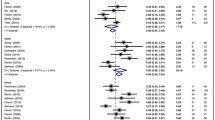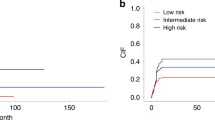Abstract
Mantle cell lymphoma (MCL) responds poorly to standard chemotherapy regimens used in non-Hodgkin's lymphoma. As a result, a combination of high-dose chemotherapy (HDT) with autologous stem cell transplantation (ASCT) is being investigated in patients with MCL. So far, however, there is no evidence for long-term remission – believed, in part, to be due to contamination of the transfusion product with residual cancer cells. Many ex-vivo purging methods have been developed to remove tumour cells, but these are complicated, time-consuming and expensive. This study describes an in vivo purging method using rituximab to produce a tumour-free stem cell product for re-infusion following HDT. The regimen is split into a purging phase and a myeloablative phase, which together consist of four-step high-dose sequential chemotherapy (sHDT) and six infusions of rituximab immunotherapy. The sHDT comprises cyclophosphamide, cytosine arabinoside, melphalan and mitoxantrone plus melphalan. There are two separate stem cell harvests and three reinfusions. In a pilot study 28 patients with untreated MCL received standard chemotherapy followed by sHDT with rituximab in vivo purging. Preliminary results indicate that in PCR analyses of leukaphereses from 20 assessable patients, 100% lymphoma-negative harvests were achieved following in vivo purging. PCR analyses of the bone marrow following the four-step high-dose regimen with purging and transplantation showed that all patients achieved molecular remission. After a median follow-up of 22 months (range 10–42 months), two patients had died while 26 were alive and disease free. This method allows efficient in vivo purging in the context of an effective chemotherapy regimen and may have a role as first-line therapy in MCL patients who respond poorly to standard treatment.
Bone Marrow Transplantation (2002) 29, Suppl. 1, S10–S13. doi:10.1038/sj.bmt.1703296
This is a preview of subscription content, access via your institution
Access options
Subscribe to this journal
Receive 12 print issues and online access
$259.00 per year
only $21.58 per issue
Buy this article
- Purchase on SpringerLink
- Instant access to full article PDF
Prices may be subject to local taxes which are calculated during checkout


Similar content being viewed by others
References
Harris NL, Jaffe ES, Stein H et al. A revised European–American classification of lymphoid neoplasms: a proposal from the International Lymphoma Study Group Blood 1994 84: 1361 1392
Harris NL, Jaffe ES, Diebold J et al. The World Health Organization classification of neoplastic diseases of the haematopoietic and lymphoid tissues: report of the Clinical Advisory Committee Meeting, Airlie House, Virginia, November 1997 Histopathology 2000 36: 69 86
Rimokh R, Berger F, Delsol G et al. Detection of the chromosomal translocation t(11;14) by polymerase chain reaction in mantle cell lymphomas Blood 1994 83: 1871 1875
de Boer CJ, Schuuring E, Dreef E et al. Cyclin D1 protein analysis in the diagnosis of mantle cell lymphoma Blood 1995 86: 2715 2723
Press O, Grogan T, Fisher R . Evaluation and management of mantle cell lymphoma Adv Leuk Lymph 1996 6: 3
Hiddemann W, Brittinger G, Tiemann M et al. Clinical characteristics and response to chemotherapy of mantle cell lymphomas – results of a European survey Blood 1996 88: 674a
Haas R, Brittinger G, Meusers P et al. Myeloablative therapy with blood stem cell transplantation is effective in mantle cell lymphoma Leukemia 1996 10: 1975 1979
Blay JY, Sebban C, Surbiguet C et al. High-dose chemotherapy with hematopoietic stem cell transplantation in patients with mantle cell or diffuse centrocytic non-Hodgkin's lymphomas: a single center experience on 18 patients Bone Marrow Transplant 1998 21: 51 54
Khouri IF, Romaguera J, Kantarjian H et al. Hyper-CVAD and high-dose methotrexate/cytarabine followed by stem-cell transplantation: an active regimen for aggressive mantle-cell lymphoma J Clin Oncol 1998 16: 3803 3809
Freedman AS, Neuberg D, Gribben JG et al. High-dose chemoradiotherapy and anti-B-cell monoclonal antibody-purged autologous bone marrow transplantation in mantle-cell lymphoma: no evidence for long-term remission J Clin Oncol 1998 16: 13 18
Andersen NS, Donovan JW, Borus JS et al. Failure of immunologic purging in mantle cell lymphoma assessed by polymerase chain reaction detection of minimal residual disease Blood 1997 90: 4212 4221
Tarella C, Corradini P, Astolfi M et al. Negative immunomagnetic ex vivo purging combined with high-dose chemotherapy with peripheral blood progenitor cell autograft in follicular lymphoma patients: evidence for long-term clinical and molecular remissions Leukemia 1999 13: 1456 1462
Corradini P, Astolfi M, Cherasco C et al. Molecular monitoring of minimal residual disease in follicular and mantle cell non-Hodgkin's lymphomas treated with high-dose chemotherapy and peripheral blood progenitor cell autografting Blood 1997 89: 724 731
Magni M, Di Nicola M, Devizzi L et al. Successful in vivo purging of CD34-containing peripheral blood harvests in mantle cell and indolent lymphoma: evidence for a role of both chemotherapy and rituximab infusion Blood 2000 96: 864 869
Tarella C, Gavarotti P, Caracciolo D et al. Haematological support of high-dose sequential chemotherapy: clinical evidence for reduction of toxicity and high response rates in poor risk lymphomas Ann Oncol 1995 6 (Suppl. 4): 3 8
Buckstein R, Imrie K, Spaner D et al. Stem cell function and engraftment is not affected by ‘in vivo purging’ with rituximab for autologous stem cell treatment for patients with low-grade non-Hodgkin's lymphoma Semin Oncol 1999 5 (Suppl. 14): 115 122
Goldberg SL, Pecora AL, Jennis AA et al. Rituximab permits in-vivo purging and collection of tumor-free stem cells prior to autologous transplantation for B-cell non-Hodgkin's lymphoma Blood 1999 94 (Suppl. 1): 141a
Salles G, Moullet I, Charlot C et al. In vivo purging with rituximab before autologous peripheral blood progenitor cell (PBPC) transplantation in lymphoma patients (pts) Blood 1999 94 (Suppl. 1): 141a
Voso MT, Pantel G, Weis M et al. In vivo depletion of B cells using a combination of high-dose cytosine arabinoside/mitoxantrone and rituximab for autografting in patients with non-Hodgkin's lymphoma Br J Haematol 2000 109: 729 735
Author information
Authors and Affiliations
Consortia
Additional information
Additional Study Investigators: C Tarella, Torino; K Patti, Palermo; E Pogliani, Monza; P Corradini, Milano; G Saglio, Torino; F Benedetti, Verona.
Rights and permissions
About this article
Cite this article
Gianni, A., Cortelazzo, S., Magni, M. et al. Rituximab: enhancing stem cell transplantation in mantle cell lymphoma. Bone Marrow Transplant 29 (Suppl 1), S10–S13 (2002). https://doi.org/10.1038/sj.bmt.1703296
Published:
Issue date:
DOI: https://doi.org/10.1038/sj.bmt.1703296
Keywords
This article is cited by
-
Hematopoietic SCT for mantle cell lymphoma: is it the standard of care?
Bone Marrow Transplantation (2010)
-
High-dose sequential chemotherapy and in vivo rituximab-purged stem cell autografting in mantle cell lymphoma: a 10-year update of the R-HDS regimen
Bone Marrow Transplantation (2009)
-
Stem cell transplantation for mantle cell lymphoma: if, when and how?
Bone Marrow Transplantation (2005)
-
Clinical use of rituximab in haematological malignancies
British Journal of Cancer (2003)
-
Safety and feasibility of CHOP/rituximab induction treatment followed by high-dose chemo/radiotherapy and autologous PBSC-transplantation in patients with previously untreated mantle cell or indolent B-cell-non-Hodgkin's lymphoma
Bone Marrow Transplantation (2003)



